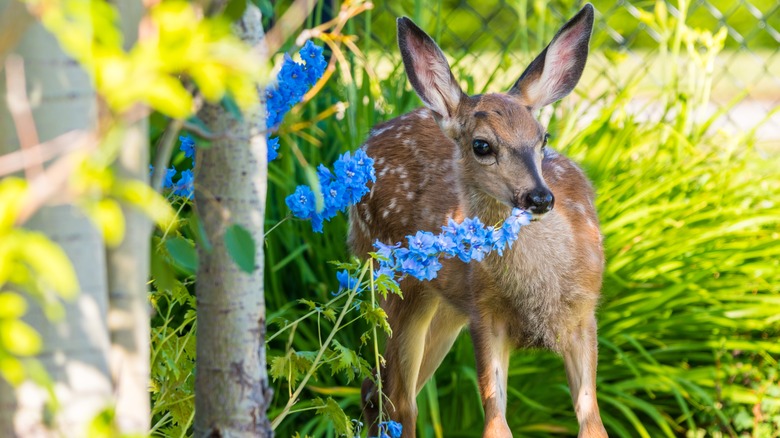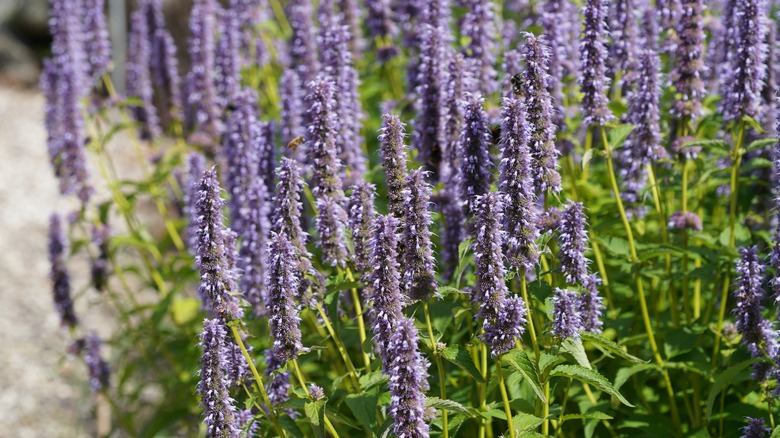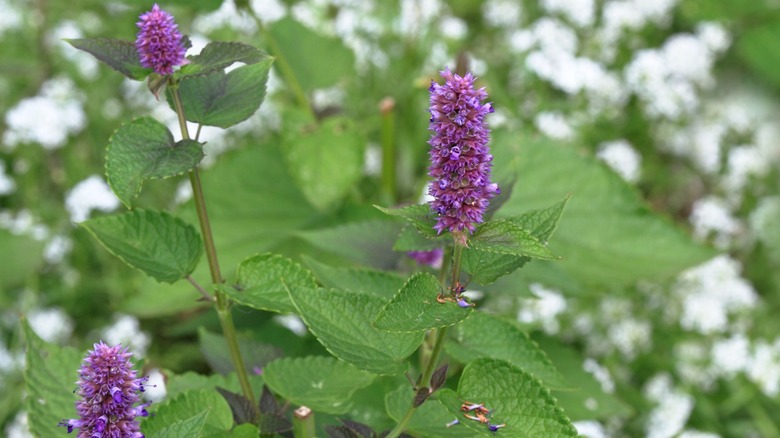The Beautiful Purple Flower That Deer Will Avoid In The Garden
In rural and suburban areas, deer can wreak significant havoc not just on vegetable gardens and fruit trees, but on herbs and flowers as well. Hostas, azaleas, roses, and tulips are some of these hooved critters' favorite floral feasts. If a deer-free flower garden is your goal, it's important to plan ahead by choosing flowering plants that will keep deer away from your bountiful harvest. If tall foliage and purple flowers spikes sound up your alley, one such flower to consider is anise hyssop (Agastache foeniculum).
Interestingly, anise hyssop is not actually anise or hyssop. Instead, is it an herbaceous perennial in the mint family. This hard-working plant features edible leaves, showy flowers that act as bee and hummingbird magnets, and the ability to self-seed. Since each plant only has a life expectancy of 2 to 3 years, self-seeding is essential for keeping a steady supply of anise hyssop around your garden. However, if you'd like to prevent or control the reseeding process, you can simply collect the plant's flowers as soon as they begin to brown and dry. You can then remove the seeds and store them in a cool, dry place for planting next season, if you wish.
Planning and planting anise hyssop
Anise hyssop is an incredibly easy plant to welcome into your garden. First, you'll need to make sure that you have space for the plant to live and spread in an area that receives at least six hours of sunlight per day. Each plant will reach a size of up to 4 feet fall and 3 feet wide and will also self-seed, which will result in more plants popping up around the area. If you have enough space and sun exposure to accommodate these short-lived-but-spreading beauties, you're well on your way to enjoying their deer-resistant charms.
Nearly any soil type is suitable for anise hyssop, as long as it isn't prone to standing water. While ongoing fertilization won't be necessary, adding some compost or other organic matter to your soil during the planting process can help to boost drainage. You can direct sow anise hyssop a week or two before the last frost of the spring, being sure to only lightly cover the seeds so that sunlight can reach them. Seedlings can be transplanted any time during the growing season.
How to use and care for anise hyssop
Caring for your anise hyssop plants is simple. Young plants will need occasional watering whenever their soil feels dry. Once established, this plant is drought resistant and will thrive without much water or maintenance. You aren't required to prune, trim, or cut back anise hyssop in order for the plant to thrive. However, if you'd like to cut back the plant for seasonal aesthetics, it is best to do so just after the flowering period. You may also deadhead old blooms to encourage more flowers to emerge.
As an herb, anise hyssop has more to offer than its beautiful flowers and resistance to deer damage. Both the leaves and the flowers are edible and can be used to make tea, jelly, and baked goods or eaten raw in a salad. Although the plant isn't related to anise, it does have an inviting taste and scent that is similar to licorice.


